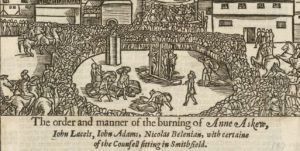On the day Melbourne equalled the world record for the longest lockdown of the COVID-19 pandemic, and during another day of violent protests in our city, we were struck by a surprising visitor.
About 9:15 in the morning, our house began to shake violently. For the first 3-4 seconds I assumed a large truck was speeding down the road past our home. I soon realised then that this was more than a vehicle travelling too quickly. The floor and the walls continued to sway for over 20 seconds.
The earthquake hit 6.0 on the Richter scale, just north of Melbourne. Thankfully no one was injured and the damage was limited to 40 buildings.
Melbourne isn’t exactly the epicentre of earthquakes. Australia sits comfortably in the middle of a tectonic plate, and yet even this seat proved unstable.
At the time, my 12-year-old daughter described the event as “surfing on concrete.” Over the course of the morning, Melburnians came together in a way we rarely see, and on Twitter of all places! Comedic memes and funny one-liners appeared. One of the best ones was a take on our Premier, the Dan Andreas Fault! Even better was the meme featuring Melbourne’s Federation Square with the tag line suggesting that the earthquake had improved the iconic building.

Even better was the meme featuring Melbourne’s Federation Square with the tag line suggesting that the earthquake has improved this iconic building.
As the day progressed, people tried to explain the earthquake. Scientists suggested New Zealand was responsible—an explanation that makes sense to most Aussies. Apparently, it was something to do with moving plates and the Kiwis jumping and breaking them in order to keep our nuclear subs away.
Other people blamed the protests erupting in Melbourne or the Government for its continued lockdown rules. Others again, mostly in jest, suggested the event was some kind of Divine sign.
I found the last most interesting—a sign of a suppressed awareness of God and a suspicion that he might be behind cataclysmic events. But it is sad that we are less quick to associate God with all the good and beautiful things in our world. It is he, after all, who “satisfies your desires with good things so that your youth is renewed like the eagle’s” (Psalm 103:5)
Shaking with Anger?
Should we connect the earthquake with God? or, more specifically, with his anger? The Bible has much to tell us about this question. For example, God is Sovereign and the earth is his. He made all that is and he remains in control:
Nothing in all creation is hidden from God’s sight. Everything is uncovered and laid bare before the eyes of him to whom we must give account. (Hebrews 4:13)
Earthquakes in the Bible—whether they appear as historical events or symbols—as illustrations of God’s activities and character. Even as Jesus hung on the cross and died, there was a violent earthquake in Jerusalem (Matt 27:51-54).
Perhaps the most poignant Biblical reference to earthquakes is found on the lips of Jesus:
You will hear of wars and rumours of wars, but see to it that you are not alarmed. Such things must happen, but the end is still to come. Nation will rise against nation, and kingdom against kingdom. There will be famines and earthquakes in various places. All these are the beginning of birth pains. (Matthew 24:6-8).
Earthquakes, bush fires, pandemics, and wars are violent reminders that life isn’t right and that the world isn’t what we long for it to be.
Jesus is describing the world as it is and the world that will continue to be until the Son of Man returns to judge. Jesus’ explanation doesn’t contradict a scientific one, he is answering the why question rather than the how. To be clear, Jesus’ is not connecting specific ‘natural’ events with particular human transgressions. As he says at one point of those killed in a building collapse: “do you think that they were worse offenders than all the others who lived in Jerusalem? No, I tell you …” (Luke 13:4-5)
Yet the jokes about judgement, while missing the mark in one sense, are closer to the truth than we may realise. Earthquakes, bush fires, pandemics, and wars all defy and destroy our hopes. They are violent reminders that life isn’t right and that the world isn’t what we long for it to be. This is why, even in our subconsciousness, we desire things like restoration and reconciliation. Even in our secular age where unbelief is the passport to intellectual and popular success, we cannot escape the inbuilt desire to explain our world in terms of a God who both judges and saves.
Hope in the Cracks
Melbourne has taken the world lockdown record and there will be many more weeks to go. Dreams have been shredded. Securities have come up empty. Suffering is real. For many, hope has fallen through the cracks.
Jesus understands. He has interpreted the world for us and his words are written down to prepare us. He doesn’t leave us with a world of hopeless despair. He came into the world, died for it, and for us, on the cross. His resurrection offers us not just a distant hope of heaven, but peace and joy today.
In the same message where he talks about earthquakes, Jesus also says this:
“From the fig tree learn its lesson: as soon as its branch becomes tender and puts out its leaves, you know that summer is near. So also, when you see all these things, you know that he is near, at the very gates. … Therefore, stay awake, for you do not know on what day your Lord is coming. But know this, that if the master of the house had known in what part of the night the thief was coming, he would have stayed awake and would not have let his house be broken into. Therefore you also must be ready, for the Son of Man is coming at an hour you do not expect.”
(Matt 24:32-33, 42-44)















